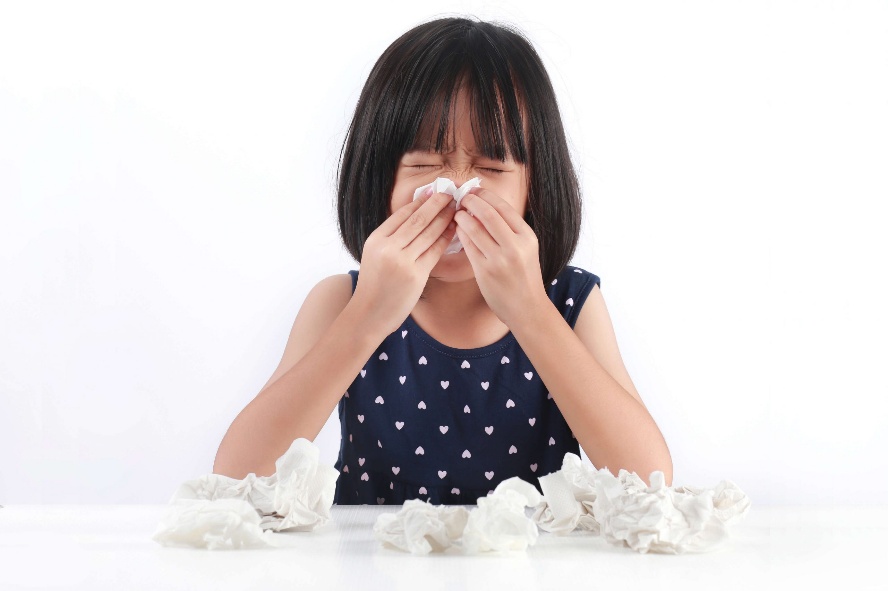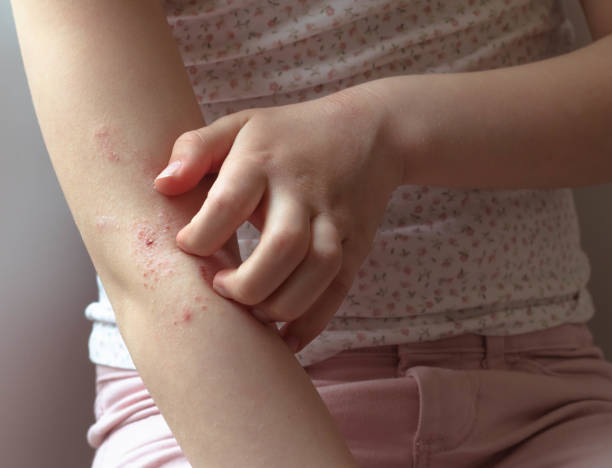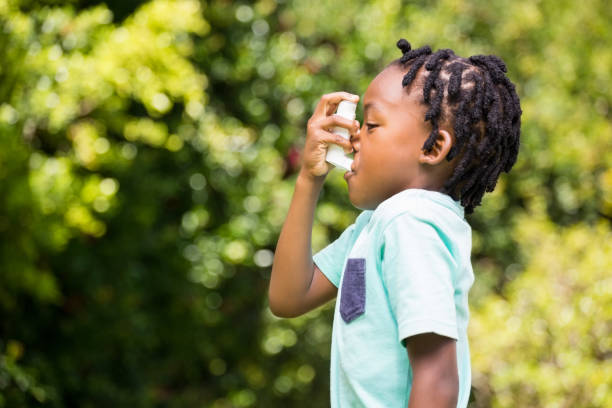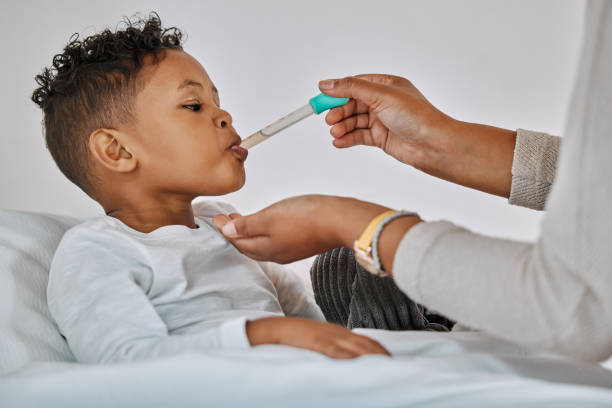Pediatric Allergies: Causes, Symptoms, and Management Strategies


Pediatric Allergies: Causes, Symptoms, and Management Strategies
 By Inventive Minds Kidz Academy
By Inventive Minds Kidz Academy
 Added Tue, Jun 24 2025
Added Tue, Jun 24 2025
 By Inventive Minds Kidz Academy
By Inventive Minds Kidz Academy
Added Tue, Jun 24 2025
Hey, Thanks For Subscribing!
Please check for a confirmation message and ensure you add us to a safe email list.
If you don't see a message in the next five minutes, check your spam or junk folders and mark our emails safe for next time.
See you soon!
Duplicate Email Found!
Well this is embarrassing... It looks like is already registered.
We have just sent an email to that address with a link to manage the subscription with us. If you don't see a message in the next five minutes, check the spam or junk folders, it's definitely there.
See you soon!

During the first few years of life, allergic disorders are among the most common chronic conditions worldwide. Nelson Textbook of Pediatrics explains allergy as:
"Allergic or atopic patients have an altered state of reactivity to common environmental and food antigens that do not cause clinical reactions in unaffected people.”
The rise in the prevalence of pediatric allergies in the past few decades has been linked to various environmental and genetic factors, leading to significant morbidity if not properly diagnosed and managed.
Common Causes of Pediatric Allergies
By definition, allergic diseases result from an abnormal immune response to otherwise harmless substances, known as allergens. These allergens could be anything. They typically include food, environmental agents (such as pollen, dust mites, and pet dander), insect stings, and medications.
When a child has an allergy to an allergen, his/her immune system tries to fight the otherwise natural and harmless substance as if it were a harmful invader. According to Nelson:
"Patients with clinical allergy usually produce immunoglobulin E (IgE) antibodies to the antigens that trigger their illness.”
As mentioned earlier, allergy is rising among children worldwide. Several hypotheses have been proposed to explain the increasing prevalence of allergic diseases:
-
Hygiene Hypothesis: This theory suggests that reduced exposure to microbes in early childhood leads to an imbalance in immune system development, increasing susceptibility to allergic diseases.
"A prominent hypothesis is the hygiene hypothesis, which proposes that certain microorganisms or infections protect against inflammatory diseases, and that their loss, due to hygiene measures, results in an increase in allergy, asthma, and autoimmunity.”
-
Biodiversity Hypothesis: Reduced microbial diversity in the gut and skin has been associated with increased allergic disease risk.
"The observed increase in allergies is due to a loss of symbiotic relationships with bacteria and dysbiosis caused by changes in the microbiome of the gut, skin, and respiratory system.”
-
Epithelial Barrier Hypothesis: Environmental toxins and pollutants may damage epithelial barriers, allowing allergens to penetrate and trigger immune responses.
"The epithelial barrier consists of four main components: the epithelial microbiota, the epithelial cell, structural proteins, and secreted epithelial products.”
Symptoms of Pediatric Allergies
Pediatric allergies manifest in various ways depending on the allergen involved, the body’s response, and the affected organ system. Symptoms can range from mild to severe, and in some cases may significantly impact a child's quality of life.
Allergic Rhinitis
Allergic rhinitis, also commonly known as hay fever, is one of the most prevalent allergic conditions in children and adolescents. It often lasts well into adulthood and is triggered by airborne allergens such as pollen, dust mites, mold, and pet dander. Symptoms include sneezing, nasal congestion, runny nose, postnasal drip, and itchy, watery eyes.

Nelson notes:
"The nasal mucosa in allergic rhinitis is classically described as pale to purple compared with the beefy-red mucosa of patients with nonallergic rhinitis.”
Children with persistent allergic rhinitis may also develop dark circles under their eyes (allergic shiners) due to chronic nasal congestion and venous stasis. Allergic rhinitis is usually worse during the spring season.
Food Allergies
Food allergies can cause a wide spectrum of reactions, ranging from mild itching and hives to life-threatening anaphylaxis. The most common food allergens in children include milk, eggs, peanuts, tree nuts, soy, wheat, fish, and shellfish.
Symptoms may involve multiple organ systems:
-
Cutaneous: Urticaria (hives), angioedema, and eczema exacerbation
-
Gastrointestinal: Vomiting, diarrhea, abdominal pain, and bloating
-
Respiratory: Wheezing, nasal congestion, and shortness of breath
-
Cardiovascular: Hypotension and anaphylactic shock (this is a medical emergency and will be discussed elsewhere)
According to Nelson:
"Food allergies are more common in infants and young children, resulting primarily in cutaneous, gastrointestinal, and, less frequently, respiratory and cardiovascular symptoms.”
Diagnosis involves careful dietary history, skin prick testing, serum IgE testing, and, if necessary, oral food challenges under medical supervision.
Atopic Dermatitis (Eczema)
Atopic dermatitis is a chronic inflammatory skin condition characterized by pruritus, erythema, dryness, and lichenification (a process that makes the skin feel hard or leather-like). It often appears in infancy and can persist into childhood and adulthood.

"Barrier dysfunction has a key role in the pathogenesis of allergic diseases.”
Triggers include allergens, irritants, climate changes, and stress. The condition follows a relapsing-remitting course and is associated with an increased risk of developing asthma and allergic rhinitis (the "atopic march").
Asthma
Although covered in the Respiratory Illnesses article, it is important to briefly mention allergic asthma, a major comorbid condition of pediatric allergies.

It is characterized by airway hyperresponsiveness, inflammation, and obstruction triggered by allergens.
"Allergic asthma is still on the rise in some cities in Asia and Africa, which have low standards of hygiene.”
Symptoms include recurrent wheezing, chronic cough, shortness of breath, and chest tightness.
Diagnosis of Pediatric Allergies
A thorough clinical history and diagnostic testing are essential for identifying allergies in children.
"Obtaining a complete history from the allergic patient involves eliciting a description of all symptoms along with their timing and duration, exposure to common allergens, and responses to previous therapies.”
Diagnostic approaches include:
-
Skin Prick Testing: Identifies specific allergens triggering an allergic response
-
Serum IgE Testing: Measures allergen-specific IgE levels in the blood
-
Oral Food Challenge: Used to confirm food allergies under medical supervision
-
Pulmonary Function Tests: Evaluates respiratory function in cases of suspected asthma
Management Strategies
Managing pediatric allergies involves allergen avoidance, pharmacological interventions, and immunotherapy.
1. Allergen Avoidance:
-
Keeping indoor environments free of dust mites, pet dander, and mold
-
Using hypoallergenic bedding and air purifiers
-
Identifying and eliminating food allergens from the child’s diet
2. Pharmacologic Treatments (Usually Prescribed by a Medical Doctor):
-
Antihistamines: Used for allergic rhinitis, urticaria, and mild allergic reactions
-
Corticosteroids: Topical steroids for eczema and inhaled steroids for asthma
-
Epinephrine: The first-line treatment for anaphylaxis
-
Leukotriene Receptor Antagonists: Useful in managing asthma and allergic rhinitis

3. Immunotherapy (Allergy Shots) for More Severe Cases:
-
Desensitization through controlled exposure to allergens over time
Nelson states:
"Tregs express CD4+CD25+ surface molecules and immunosuppressive cytokines such as IL-10, IL-35, and transforming growth factor-β (TGF-β1),”
highlighting their role in immune tolerance.
References:
Nelson Textbook of Pediatrics, 22nd Edition
During the first few years of life, allergic disorders are among the most common chronic conditions worldwide. Nelson Textbook of Pediatrics explains allergy as:
"Allergic or atopic patients have an altered state of reactivity to common environmental and food antigens that do not cause clinical reactions in unaffected people.”
The rise in the prevalence of pediatric allergies in the past few decades has been linked to various environmental and genetic factors, leading to significant morbidity if not properly diagnosed and managed.
Common Causes of Pediatric Allergies
By definition, allergic diseases result from an abnormal immune response to otherwise harmless substances, known as allergens. These allergens could be anything. They typically include food, environmental agents (such as pollen, dust mites, and pet dander), insect stings, and medications.
When a child has an allergy to an allergen, his/her immune system tries to fight the otherwise natural and harmless substance as if it were a harmful invader. According to Nelson:
"Patients with clinical allergy usually produce immunoglobulin E (IgE) antibodies to the antigens that trigger their illness.”
As mentioned earlier, allergy is rising among children worldwide. Several hypotheses have been proposed to explain the increasing prevalence of allergic diseases:
-
Hygiene Hypothesis: This theory suggests that reduced exposure to microbes in early childhood leads to an imbalance in immune system development, increasing susceptibility to allergic diseases.
"A prominent hypothesis is the hygiene hypothesis, which proposes that certain microorganisms or infections protect against inflammatory diseases, and that their loss, due to hygiene measures, results in an increase in allergy, asthma, and autoimmunity.”
-
Biodiversity Hypothesis: Reduced microbial diversity in the gut and skin has been associated with increased allergic disease risk.
"The observed increase in allergies is due to a loss of symbiotic relationships with bacteria and dysbiosis caused by changes in the microbiome of the gut, skin, and respiratory system.”
-
Epithelial Barrier Hypothesis: Environmental toxins and pollutants may damage epithelial barriers, allowing allergens to penetrate and trigger immune responses.
"The epithelial barrier consists of four main components: the epithelial microbiota, the epithelial cell, structural proteins, and secreted epithelial products.”
Symptoms of Pediatric Allergies
Pediatric allergies manifest in various ways depending on the allergen involved, the body’s response, and the affected organ system. Symptoms can range from mild to severe, and in some cases may significantly impact a child's quality of life.
Allergic Rhinitis
Allergic rhinitis, also commonly known as hay fever, is one of the most prevalent allergic conditions in children and adolescents. It often lasts well into adulthood and is triggered by airborne allergens such as pollen, dust mites, mold, and pet dander. Symptoms include sneezing, nasal congestion, runny nose, postnasal drip, and itchy, watery eyes.

Nelson notes:
"The nasal mucosa in allergic rhinitis is classically described as pale to purple compared with the beefy-red mucosa of patients with nonallergic rhinitis.”
Children with persistent allergic rhinitis may also develop dark circles under their eyes (allergic shiners) due to chronic nasal congestion and venous stasis. Allergic rhinitis is usually worse during the spring season.
Food Allergies
Food allergies can cause a wide spectrum of reactions, ranging from mild itching and hives to life-threatening anaphylaxis. The most common food allergens in children include milk, eggs, peanuts, tree nuts, soy, wheat, fish, and shellfish.
Symptoms may involve multiple organ systems:
-
Cutaneous: Urticaria (hives), angioedema, and eczema exacerbation
-
Gastrointestinal: Vomiting, diarrhea, abdominal pain, and bloating
-
Respiratory: Wheezing, nasal congestion, and shortness of breath
-
Cardiovascular: Hypotension and anaphylactic shock (this is a medical emergency and will be discussed elsewhere)
According to Nelson:
"Food allergies are more common in infants and young children, resulting primarily in cutaneous, gastrointestinal, and, less frequently, respiratory and cardiovascular symptoms.”
Diagnosis involves careful dietary history, skin prick testing, serum IgE testing, and, if necessary, oral food challenges under medical supervision.
Atopic Dermatitis (Eczema)
Atopic dermatitis is a chronic inflammatory skin condition characterized by pruritus, erythema, dryness, and lichenification (a process that makes the skin feel hard or leather-like). It often appears in infancy and can persist into childhood and adulthood.

"Barrier dysfunction has a key role in the pathogenesis of allergic diseases.”
Triggers include allergens, irritants, climate changes, and stress. The condition follows a relapsing-remitting course and is associated with an increased risk of developing asthma and allergic rhinitis (the "atopic march").
Asthma
Although covered in the Respiratory Illnesses article, it is important to briefly mention allergic asthma, a major comorbid condition of pediatric allergies.

It is characterized by airway hyperresponsiveness, inflammation, and obstruction triggered by allergens.
"Allergic asthma is still on the rise in some cities in Asia and Africa, which have low standards of hygiene.”
Symptoms include recurrent wheezing, chronic cough, shortness of breath, and chest tightness.
Diagnosis of Pediatric Allergies
A thorough clinical history and diagnostic testing are essential for identifying allergies in children.
"Obtaining a complete history from the allergic patient involves eliciting a description of all symptoms along with their timing and duration, exposure to common allergens, and responses to previous therapies.”
Diagnostic approaches include:
-
Skin Prick Testing: Identifies specific allergens triggering an allergic response
-
Serum IgE Testing: Measures allergen-specific IgE levels in the blood
-
Oral Food Challenge: Used to confirm food allergies under medical supervision
-
Pulmonary Function Tests: Evaluates respiratory function in cases of suspected asthma
Management Strategies
Managing pediatric allergies involves allergen avoidance, pharmacological interventions, and immunotherapy.
1. Allergen Avoidance:
-
Keeping indoor environments free of dust mites, pet dander, and mold
-
Using hypoallergenic bedding and air purifiers
-
Identifying and eliminating food allergens from the child’s diet
2. Pharmacologic Treatments (Usually Prescribed by a Medical Doctor):
-
Antihistamines: Used for allergic rhinitis, urticaria, and mild allergic reactions
-
Corticosteroids: Topical steroids for eczema and inhaled steroids for asthma
-
Epinephrine: The first-line treatment for anaphylaxis
-
Leukotriene Receptor Antagonists: Useful in managing asthma and allergic rhinitis

3. Immunotherapy (Allergy Shots) for More Severe Cases:
-
Desensitization through controlled exposure to allergens over time
Nelson states:
"Tregs express CD4+CD25+ surface molecules and immunosuppressive cytokines such as IL-10, IL-35, and transforming growth factor-β (TGF-β1),”
highlighting their role in immune tolerance.
References:
Nelson Textbook of Pediatrics, 22nd Edition
Most Talked About Posts
You May Also Like
Staff Picks
Now Trending
Our Newsletter
Duplicate Email Found!
Well this is embarrassing... It looks like is already registered.
We have just sent an email to that address with a link to manage the subscription with us. If you don't see a message in the next five minutes, check the spam or junk folders, it's definitely there.
See you soon!
Join Our Newsletter
Hey, Thanks For Subscribing!
Please check for a confirmation message and ensure you add us to a safe email list.
If you don't see a message in the next five minutes, check your spam or junk folders and mark our emails safe for next time.
See you soon!
Duplicate Email Found!
Well this is embarrassing... It looks like is already registered.
We have just sent an email to that address with a link to manage the subscription with us. If you don't see a message in the next five minutes, check the spam or junk folders, it's definitely there.
See you soon!










